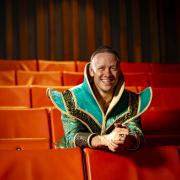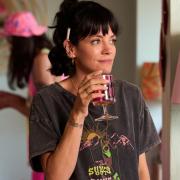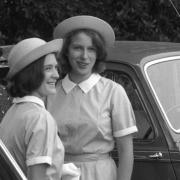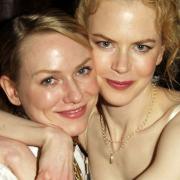Tonbridge sculptor Guy Portelli on how his appearance on Dragon's Den changed his life and the extraordinary global opportunities that now lie ahead
When Tonbridge-based sculptor Guy Portelli triumphed on hit TV show Dragon’s Den in 2008, securing �80,000 from three of the five multi-millionaire investors and proving that despite a recession, art remains a very attractive proposition for investment, overnight he became one of the most recognisable sculptors in the country..“Which was a very strange thing,” says Guy, 53, who has been creating sculptures since he was 17, has sold �1m-worth of his work over 20 years and already had an international reputation before the nation saw his Pop Icons collection unveiled on TV. His work is found all over Britain, the USA and Europe, in private, public and corporate collections, ranging from 300 classical sculptures for Manchester's Trafford Centre to a moving memorial at Hillview School in Tonbridge and several pieces for musician Ringo Starr, a big fan of his. Vice-President of the Royal Society of British Artists, Guy – who in his spare time also paints rather well – has written Modern British Sculpture , an impressive study of modern sculpture developments in Great Britain, and is a Fellow of the Royal British Society of Sculptors.A generous supporter of many local charities, Guy highlights one very special relationship. “Peter Chritchell, chairman of Kent Ferrari, suggested we should do a charity event together for the Royal London Society for the Blind, and that has led onto an annual event at Dorton House and other exhibition possibilities. Many pop stars are collectors of Ferraris , so for me it’s a brilliant association.”While home has been Tonbridge for 40 years, Guy’s early years couldn’t have been more different. Born in South Africa to glamorous young parents wanting to make a fresh start abroad (his mother studied fashion at Canterbury, his father fine art at Dulwich and both went to Chelsea Art College), Guy says: “I was brought up in an environment where creativity was all around me.”His father, who died when Guy was 17, became a keen cameraman and filmmaker and documented many African tribal events before immersing himself in music, learning the piano and even writing a successful musical.
But with the spread of apartheid and growing unrest, the Portellis (the exotic name originates from Malta) headed back for England when Guy was 12 and he found himself living with the grandfather he’d never met before in his Southend flat. A “fanatical” fisherman in South Africa, he couldn’t believe his luck at being so close to the sea and able to go fishing off the pier every weekend.The culture shock didn’t really kick in until a year later when the family moved to Tonbridge, buying a “house with history” on The Ridgeway and Guy started school at Hugh Christie. His strong accent, unusual approach to homework (he refused to do any, arguing that he’d never had to in South Africa) and living in a house that “some kids thought was haunted and some thought was just too posh,” meant there was little reprieve from his peers.Leaving school at 16, Guy went to Medway College of Art to study interior design, only discovering his natural leaning towards sculpture when he changed course after the first year to 3D design. His entrepreneurial spirit and drive also started to emerge.“I set up my own business making exhibition stands and theatre sets and for two years I didn’t do any work because I was so busy,” he says. “I was employing about 20 other students and the head of department said I had a bigger budget than he did!”Guy nonetheless graduated and got a job making pub signs and hotel interiors in London’s East End, while also painting and sculpting three nights a week at Chelsea Art College.Then an opportunity arose to work in the special effects department at the BBC, where he made planets and guns for Dr Who and Blake’s Seven.
Bolstered by this experience, Guy set up his own studio, producing sculptures for the advertising market. While from very early on he had a knack of starting at the top, life hasn’t always been easy and Guy’s early years saw many dark days, including the death of his son Anthony at 13 to a rare brain disease, the break up of his marriage and years with a crippling overdraft, which money from the huge Trafford Centre project finally cleared.Guy had almost given up on sculpture, which he compares to climbing mountains. “You are hanging off the edge of a cliff, trying to scramble to the top. It’s precarious, you can fall off – and people do – but you get addicted to the struggle. There are certain times when you look at a piece and think if that doesn’t work now, I don’t know how I will ever lift myself up to do it again.” But the pull remains: “When you put a big piece of sculpture in a room, people walk past everything else to go to see it. It is all absorbing. I don’t want to be one of those artists who is walked past to get to someone else's work.” Writing to Dragon’s Den was Guy’s “make or break scenario.” He’d originally presented the idea of setting up an agency selling art to collectors, listing his pop icon sculptures under ‘other interests.’ The researcher was clearly fascinated, but couldn’t tell Guy over the phone. Fortunately he took the hint, repitched the proposal, explaining that he wanted to build a collection that created an identity about youth culture and fashion and was entering the Den to secure the money to complete 18 pop icons for an exhibition at London’s Mall Galleries.Music has always been a common thread in Guy’s work and he was canny enough to realise that this particular collection was not only unique but would really connect with his audience.“I had this real frustration that I was good at an art form but I could see it didn’t have the same power as music and I wanted to capture some of that essence and power out of the music and put it into the art,” he explains. It worked.Anyone who watched the original programme or who has since seen it on YouTube will have been impressed by Guy’s sheer level of cool; the BBC say it ranks simply as the ‘best ever’ pitch.“You’re absorbing a huge amount of information and having to work it out as you go along,” he admits. “The interesting thing was when the power came to me and suddenly all five of them wanted in and then I said no, I didn’t want all five and I was in control and had turned the tables on them.”What made TV gold was when Guy, who had gone in asking for �70,000, turned down Duncan Bannatyne’s offer of �90,000 for the chance of working with James Caan, Theo Paphitis and Peter Jones – for a lesser �80,000. “The BBC were really pleased with that because only an artist would turn down more money! It made Deborah Meaden giggle that I was haggling them down rather than up!” he laughs.The programme was recorded in April but not aired until August, which gave Guy 12 weeks to prepare – or so he thought. He loves wandering down from his St Mary’s Road studio in his working clothes for a spot of local shopping. But that proved more difficult than usual ‘the morning after.’“Tonbridge came to a standstill! People were stopping their cars in the middle of the road and shouting out, they’d cross over the road to say how much they loved my work,” he says.But Guy knows he needs to use the platform he has created and come back with something completely different. A true ‘ideas man’, he is using his success to scale new heights, ranging from an ambitious global Olympic project to a ‘London Rocks’ exhibition celebrating British music and a symbolic Prince William piece using the vehicle of sport.And he reveals: “I have done the book, but now I would love to explore the possibilities of film, the art form of our time. I am working with a top producer on an idea, so watch this space!”
GET IN TOUCHSee Guy Portelli's sculptures at the Royal Society of British Artists’ annual exhibition at The Mall Galleries, London SW1Y 5BD, 1-12 March. 020 7930 6844 for more details.Contact Guy at: 01732 364708, enquiries@portelli-sculptor.co.uk


























